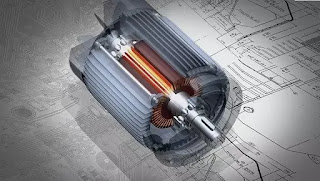Working of fuel cell electric vehicles using hydrogen
BY AFZAL YOUSAF
As we know, Fuel cell electric vehicles are also a part of the paradigm shift that is currently underway in the electrification of transportation. In this article, we can go through the basic working of a Hydrogen fuel-cell electric vehicle and its key components.
A Fuel Cell Electric Vehicle (FCEV) is an electric vehicle that produces its own electricity through an electrochemical reaction. Using a Hydrogen Fuel Cell stack, the vehicle combines pure Hydrogen and Oxygen across a membrane to create water. Through this process, Electric current is generated.
How does a Hydrogen Fuel cell electric vehicle work?
Hydrogen fuel cell electric vehicles use electricity generated through their electrochemical reaction to power an electric motor. The size of the fuel cell and Hydrogen tank is determined by the electric motor that has to power the vehicle. FCEVs will also have a battery to assist the fuel cells. This battery will mostly be used to recapture the regen power and provide extra power during short acceleration of the vehicle.
In FCEVs, during low power needs, the extra battery provided will smooth out the power delivered from the fuel cell and can make the fuel cell idle or turn off. Unlike Pure EVs, where the amount of power and energy available is determined by the battery pack, in FCEVs, it is determined by the size of the Hydrogen fuel tank.
 |
| Toyota Mirai |
FCEVs are considered to be the naturally evolving solution for Zero emission. It can overcome the limitations of Pure electric vehicles in some aspects. Refuel of FCEVs is a lot quicker than pure EVs. But one of the biggest misconceptions about FCEVs is that they are competing with electric cars and the winner takes market dominance of sustainable transportation. This isn’t really possible because FCEVs are basically electric cars as they have batteries and capacitors that provide power, but those are much smaller because they are continually recharged by a hydrogen fuel cell.
Key Components of a Hydrogen Fuel cell vehicle
- Hydrogen Fuel tank - Stores Hydrogen onboard the vehicle needed for the electrochemical reaction.
- Fuel cell stack - Individual membrane electrodes assembled to produce electricity from Hydrogen and oxygen
- Fuel filler - Nozzle from a fuel dispenser attaches to the vehicle receptacle to fill the tank
- Electric Traction motor - The Motor that drives the vehicle and also acts as a generator during braking
- Power electronics controller - Controls the flow of electrical energy from the fuel cell and battery. Also controls the speed and torque of the traction motor
- Thermal cooling system - Maintains the proper operating temperature of the fuel cell, traction motor, and electronic components
- Transmission - Transfers mechanical power to wheels from the electrical power
- Battery pack - High Voltage battery to provide supplemental energy to the traction motor and store energy from regeneration
- Auxiliary battery - Low voltage battery to start the vehicle before High voltage battery is engaged. Also to support vehicle electrical accessories
- DC/DC Converter - Converts High voltage DC power to Low voltage and recharges the LV Battery







BusinessesWire excels at turning complex business information into understandable and practical insights. Its thoughtful coverage of markets, leadership strategies, and corporate developments equips readers with the knowledge necessary to thrive in today’s competitive business environment.
ReplyDeleteI appreciate TechAlice for delivering insightful, in-depth coverage of technology. Its ability to connect innovation to global challenges and opportunities ensures that readers remain informed, inspired, and prepared for the future of tech-driven change.
ReplyDeleteSmartBusinessTimes offers a refreshing approach to business news, focusing not just on headlines but on deep, thoughtful analysis. Its content empowers readers to think critically about market trends and strategic opportunities worldwide.
ReplyDelete